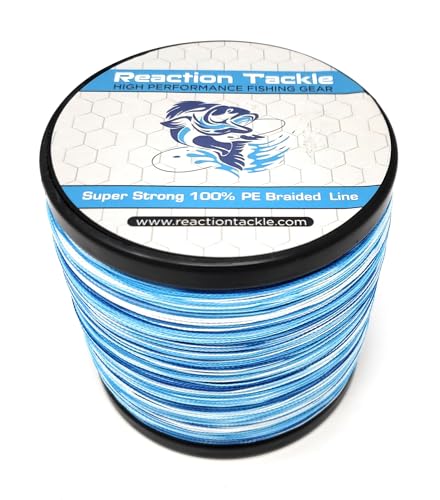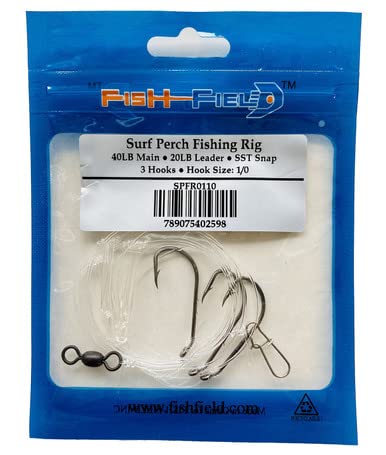Surf fishing safety precautions involve wearing a life jacket and monitoring tides and weather conditions. When surf fishing, it is important to take these precautions to ensure your safety.
Wearing a life jacket can prevent accidents and ensure you stay afloat in case of strong currents. Additionally, monitoring tides and weather conditions can help you avoid unexpected waves and storms, which can be dangerous. By following these safety measures, you can enjoy a safe and enjoyable surf fishing experience.
So, let’s dive in and explore the importance of surf fishing safety precautions and how they can protect you during your fishing trips.
:max_bytes(150000):strip_icc()/panama-city-beach-florida-SUMMRBEACH0520-2a53a54809d64148a6ed047f2d14f986.jpg)
Credit: www.travelandleisure.com
Assessing Beach Conditions
Surf Fishing Safety Precautions
Surf fishing is an exhilarating and rewarding experience, but it is essential to prioritize safety when venturing into the water. Assessing beach conditions before setting up for a day of surf fishing is crucial to ensure a safe and enjoyable outing.
By following these safety precautions, you can minimize risks and maximize your fishing experience.
Check The Weather And Tides
Before heading to the beach, make sure to check the weather forecast and tidal information. Understanding these factors will help you determine if it’s safe to fish and what conditions to expect. Consider the following points:
- Weather conditions: Check for any significant weather patterns, such as storms, high winds, or heavy rain. Avoid fishing during severe weather conditions as they can pose a danger.
- Tidal movements: Understand the tide schedule to plan your fishing activities accordingly. Fishing during low tide can expose hazardous rocks or create strong currents, while high tide can make it difficult to navigate the shoreline.
Evaluating The Beach Terrain
Assessing the beach terrain is essential to identify potential hazards and choose the safest fishing spot. Keep the following points in mind:
- Accessibility: Determine if the beach area is easily accessible. Look for sturdy walkways, ramps, or paths to ensure a safer journey to your fishing location.
- Sand conditions: Pay attention to the texture of the sand. Soft, shifting sands can increase the risk of tripping, sinking, or getting stuck, so it’s crucial to choose areas with firmer sand for stability.
- Slopes and dunes: Be aware of sloping areas or sand dunes that may be unstable. Avoid fishing near steep slopes or cliffs, as they can collapse and cause accidents.
Identifying Potential Hazards
Identifying potential hazards along the beach is crucial for your safety. Take note of the following points:
- Marine life: Familiarize yourself with any known marine life that you may encounter while surf fishing, such as jellyfish, stingrays, or even sharks. If you come across any dangerous species, maintain a safe distance and report the sighting if necessary.
- Rip currents: Learn to spot signs of rip currents and know how to escape them. Avoid fishing near areas with strong currents, as they can quickly pull you away from the shore.
- Debris and obstacles: Keep an eye out for any debris or obstacles, such as rocks, submerged structures, or fishing lines. These can pose threats to your safety and hinder your movement.
By diligently assessing beach conditions, you can ensure a safe and enjoyable surf fishing experience. Remember to check the weather and tides, evaluate the beach terrain, and identify any potential hazards to minimize risks. Stay informed, be cautious, and make safety your top priority for a successful day of surf fishing.
Essential Gear And Equipment
As you prepare for a day of surf fishing, it’s crucial to have the right gear and equipment to ensure your safety and maximize your chances of a successful fishing trip. From selecting the appropriate rod and reel to choosing the right fishing line and hooks, here are the essential gear and equipment considerations for surf fishing.
Choosing The Right Fishing Rod And Reel
When it comes to surf fishing, it’s important to have a sturdy and reliable fishing rod and reel combination. Consider the following key points when choosing your fishing rod and reel:
- Length and strength: Opt for a fishing rod that is 10-12 feet in length as it provides the leverage needed for casting in the surf. Additionally, choose a rod with medium to heavy power to handle larger fish and withstand the challenging surf conditions.
- Material and construction: Look for a fishing rod made of durable materials such as graphite or fiberglass. These materials offer the necessary strength to handle rough waves and powerful fish. Ensure that the rod has a sturdy construction to withstand the harsh conditions of surf fishing.
- Reel size and line capacity: Select a spinning reel that is suitable for surf fishing. Look for a reel with a large line capacity to accommodate the heavier fishing line required for surf fishing. Make sure the reel has a smooth drag system and is designed to handle saltwater conditions.
- Additional features: Consider features such as anti-corrosion components, double-anodized spools, and comfortable handles. These features enhance the longevity and functionality of your fishing gear in the surf.
Selecting Appropriate Fishing Line And Hooks
Choosing the right fishing line and hooks is crucial for surf fishing success. Consider the following points when selecting your fishing line and hooks:
- Line strength: Use a strong and durable fishing line with a test strength of 20-30 pounds. This ensures that your line can handle the weight and resistance of larger fish and withstand the harsh surf conditions.
- Abrasion resistance: Look for fishing lines with high abrasion resistance to withstand the rough conditions encountered in the surf. This prevents the line from breaking or getting damaged by rocks, shells, or other debris.
- Hook size and type: Select hooks that are appropriate for the size of the fish you expect to catch. Use larger hooks for larger fish species. Additionally, consider using circle hooks as they tend to hook fish in the lip, reducing the risk of deep hooking and facilitating catch-and-release practices.
- Barbless hooks: Using barbless hooks is beneficial as they minimize damage to the fish and make it easier to release them. Barbless hooks also reduce the risk of injury to yourself when handling fish.
Ensuring Proper Safety Equipment
Safety should always be a top priority when surf fishing. Make sure you have the following safety equipment:
- Safety float: Attach a safety float to your fishing line. This float provides extra buoyancy and visibility, making it easier to spot your line in the surf and helping prevent accidental entanglement.
- Personal flotation device: If you plan to wade into deeper waters, wear a personal flotation device (pfd) for added safety. A pfd ensures you remain buoyant in case of accidental falls or strong currents.
- Protective footwear: Invest in a good pair of non-slip wading boots or water shoes. These provide traction on slippery rocks and protect your feet from sharp objects or stings from marine life.
- Sun protection: Protect yourself from the sun’s harmful rays by wearing a wide-brimmed hat, sunglasses, and applying sunscreen. Extended exposure to the sun can lead to sunburn and long-term skin damage.
By selecting the right fishing rod and reel, choosing appropriate fishing line and hooks, and ensuring proper safety equipment, you’ll be well-prepared to enjoy a safe and successful surf fishing adventure. Remember to always prioritize safety and respect nature while enjoying the thrill of surf fishing.
Happy fishing!
Safe Techniques For Surf Fishing
Surf fishing can be an exhilarating and rewarding experience, but it’s important to prioritize safety while out on the shoreline. By following a few key techniques, you can minimize risks and ensure a safe and enjoyable fishing trip. In this section, we’ll explore three essential aspects of surf fishing safety: mastering casting techniques, properly handling and releasing fish, and safely retrieving tangled lines.
Mastering Casting Techniques
When it comes to surf fishing, mastering your casting technique is essential for both safety and success. Here are a few key points to keep in mind:
- Practice your casting technique on dry land before heading to the beach. This will help you familiarize yourself with the motion and minimize the risk of injury.
- Use appropriate casting weights for the conditions. Strong winds and rough surf may require heavier weights to ensure a proper cast.
- Avoid casting directly over or near other anglers. Giving each other enough space is crucial to prevent entanglement and potential accidents.
- Always be aware of your surroundings, including people, structures, and wildlife. Adjust your casting technique accordingly to minimize the risk of hitting anyone or anything.
Properly Handling And Releasing Fish
Responsible fishing involves properly handling and releasing fish to ensure their survival. Follow these guidelines for safe fish handling:
- Wet your hands or wear gloves when handling fish. This helps protect their delicate slime layer, which is essential for their health.
- Remove the hook as quickly and gently as possible using needle-nose pliers or a dehooking tool. Never yank or pull forcefully, as this can cause injury to the fish.
- Minimize the time the fish spends out of the water. When taking photos, keep the fish close to the water surface for support and release them promptly.
- If the fish is deeply hooked or injured, consider cutting the line as close to the hook as possible. This will increase their chances of survival and prevent prolonged suffering.
Safely Retrieving Tangled Lines
Tangled fishing lines can present a safety hazard if not handled properly. Here are a few steps to safely retrieve tangled lines:
- Remain calm and avoid making sudden movements when you encounter a tangled line. This will help prevent further entanglement and potential injuries.
- Gently untangle the line using a slow and steady approach. Avoid applying excessive force, as this can cause the line to snap or become even more tangled.
- If the line is caught on any underwater structures, carefully maneuver your rod to release the tension and free the line.
- Regularly inspect your fishing equipment for any signs of wear and tear. Replace damaged lines or equipment to avoid unexpected line breaks or accidents.
By implementing these safe techniques for surf fishing, you can enjoy your time on the shoreline while minimizing risks and respecting the environment. Remember, safety should always be a top priority when pursuing your passion for fishing. Happy angling!
Conclusion
To ensure a safe and enjoyable surf fishing experience, it is crucial to follow these precautions. Firstly, always check the weather and surf conditions before heading out. Secondly, dress appropriately with the right gear, such as waders, a life jacket, and non-slip footwear.
Thirdly, never fish alone and inform someone about your whereabouts. Fourthly, be cautious of your surroundings, including incoming tides and strong currents. Lastly, be mindful of marine life, avoiding contact with jellyfish, stingrays, and other potentially dangerous creatures. By adhering to these safety measures, you can protect yourself and minimize the risks associated with surf fishing.
Whether you are a seasoned angler or a beginner, prioritize safety to fully enjoy your time on the shoreline. Embrace the beauty of nature, experience the thrill of reeling in a catch, and cherish memories of your surf fishing adventures for years to come.
Stay safe, stay responsible, and happy fishing!






